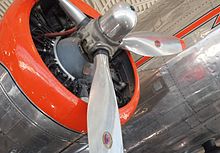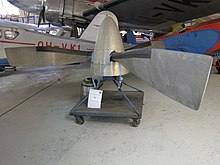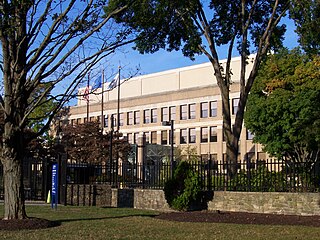
Pratt & Whitney is an American aerospace manufacturer with global service operations. It is a subsidiary of RTX Corporation. Pratt & Whitney's aircraft engines are widely used in both civil aviation and military aviation. Its headquarters are in East Hartford, Connecticut. As one of the "big three" aero-engine manufacturers, it competes with General Electric and Rolls-Royce, although it has also formed joint ventures with both of these companies. In addition to aircraft engines, Pratt & Whitney manufactures gas turbines for industrial and power generation, and marine turbines. In 2017, the company reported that in 2014 they had 38,737 employees supporting more than 11,000 customers in 180 countries around the world. In 2013, Pratt & Whitney's revenue totaled $14.5 billion.

An aerospace manufacturer is a company or individual involved in the various aspects of designing, building, testing, selling, and maintaining aircraft, aircraft parts, missiles, rockets, or spacecraft. Aerospace is a high technology industry.

The Boeing 377 Stratocruiser was a large long-range airliner developed from the C-97 Stratofreighter military transport, itself a derivative of the B-29 Superfortress. The Stratocruiser's first flight was on July 8, 1947. Its design was advanced for its day; its relatively innovative features included two passenger decks and a pressurized cabin. It could carry up to 100 passengers on the main deck plus 14 in the lower deck lounge; typical seating was for 63 or 84 passengers or 28 berthed and five seated passengers.

The Goodrich Corporation, formerly the B.F. Goodrich Company, was an American manufacturing company based in Charlotte, North Carolina. Founded in Akron, Ohio in 1870 as Goodrich, Tew & Co. by Dr. Benjamin Franklin Goodrich, the company name was changed to the "B.F. Goodrich Company" in 1880, to BFGoodrich in the 1980s, and to "Goodrich Corporation" in 2001. Originally a rubber manufacturing company known for automobile tires, the company diversified its manufacturing businesses throughout the twentieth century and sold off its tire business in 1986 to focus on its other businesses, such as aerospace and chemical manufacturing. The BFGoodrich brand name continues to be used by Michelin, who acquired the tire manufacturing business in 1988. Following the acquisition by United Technologies in 2012, Goodrich became a part of UTC Aerospace Systems.
The United Aircraft and Transport Corporation was formed in 1929, when William Boeing of Boeing Airplane & Transport Corporation teamed up with Frederick Rentschler of Pratt & Whitney to form a large, vertically integrated, amalgamated firm, uniting business interests in all aspects of aviation—a combination of airframe and aircraft engine manufacturing and airline business, to serve all aviation markets, both civil aviation and military aviation.
United Technologies Corporation (UTC) was an American multinational conglomerate headquartered in Farmington, Connecticut. It researched, developed, and manufactured products in numerous areas, including aircraft engines, aerospace systems, HVAC, elevators and escalators, fire and security, building automation, and industrial products, among others. UTC was also a large military contractor, getting about 10% of its revenue from the U.S. government. Gregory J. Hayes was the CEO and chairman.
SIA Engineering Company Limited is a Singaporean company, specialising in aircraft maintenance, repair and overhaul (MRO) services in the Asia-Pacific. It is a wholly owned subsidiary of the Singapore Airlines Group, formed in 1992 with the separation of SIA's engineering division.
The United Aircraft Corporation was an American aircraft manufacturer formed by the break-up of United Aircraft and Transport Corporation in 1934. In 1975, the company became United Technologies.
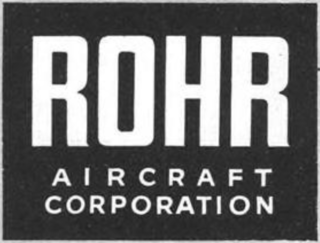
Rohr, Inc. is an aerospace manufacturing company based in Chula Vista, California, south of San Diego. It is a wholly owned unit of the Collins Aerospace division of Raytheon Technologies; it was founded in 1940 by Frederick H. Rohr as Rohr Aircraft.
IAE International Aero Engines AG is a Zürich-registered joint venture aeroengine manufacturing company.
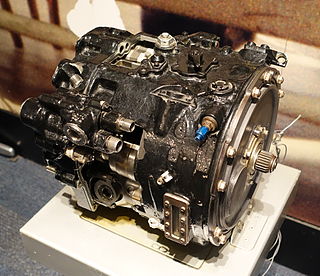
A constant speed drive (CSD) also known as a constant speed generator, is a type of transmission that takes an input shaft rotating at a wide range of speeds, delivering this power to an output shaft that rotates at a constant speed, despite the varying input. They are used to drive mechanisms, typically electrical generators, that require a constant input speed.

Thomas Foster Hamilton was a pioneering aviator and the founder of the Hamilton Standard Company.

Aero Engine Controls is the former name of Rolls-Royce Controls and Data Services. The company produces engine control software, electronic engine controls (EEC), fuel metering units (FMU), fuel pumps and engine actuators for a large number of common commercial and military aircraft. Together these parts comprise the control system for a jet engine, responsible for delivering the correct amount of fuel and maintaining engine safety.

The Menasco Motors Company was an American aircraft engine and component manufacturer.
Hamilton Sundstrand was an American globally active corporation that manufactured and supported aerospace and industrial products for worldwide markets. A subsidiary of United Technologies Corporation, it was headquartered in Windsor Locks, Connecticut. The company was formed from the merger of Hamilton Standard and Sundstrand Corporation in 1999. In 2012, Hamilton Sundstrand was merged with Goodrich Corporation to form UTC Aerospace Systems. In 2018, UTC Aerospace Systems and Rockwell Collins combined to form Collins Aerospace.
The General Aviation Manufacturers Association (GAMA) is the industry trade association representing general aviation aircraft manufacturers and related enterprises, chiefly in the United States. It is headquartered in Washington, D.C., with an office in Brussels, Belgium.
Rolls-Royce Controls and Data Services Limited provides safety critical controls and asset intelligence solutions for industrial power, marine, civil and military aerospace. It produces engine control software, electronic engine controls (EEC), fuel metering units (FMU), fuel pumps and engine actuators for a large number of common commercial and military aircraft. Together these parts comprise the control system for a jet engine, responsible for delivering the correct amount of fuel and maintaining engine safety.
UTC Aerospace Systems (UTAS) was one of the world’s largest suppliers of aerospace and defense products, headquartered in Charlotte, North Carolina, United States. The company was formed in August 2012 when parent United Technologies Corporation merged their existing subsidiary Hamilton Sundstrand with the newly-acquired Goodrich Corporation. In 2018, UTC acquired Rockwell Collins which was merged to form Collins Aerospace.

RTX Corporation is an American multinational aerospace and defense conglomerate headquartered in Arlington, Virginia. It is one of the largest aerospace and defense manufacturers in the world by revenue and market capitalization, as well as one of the largest providers of intelligence services. RTX manufactures aircraft engines, avionics, aerostructures, cybersecurity solutions, guided missiles, air defense systems, satellites, and drones. The company is also a large military contractor, getting a significant portion of its revenue from the U.S. government.


